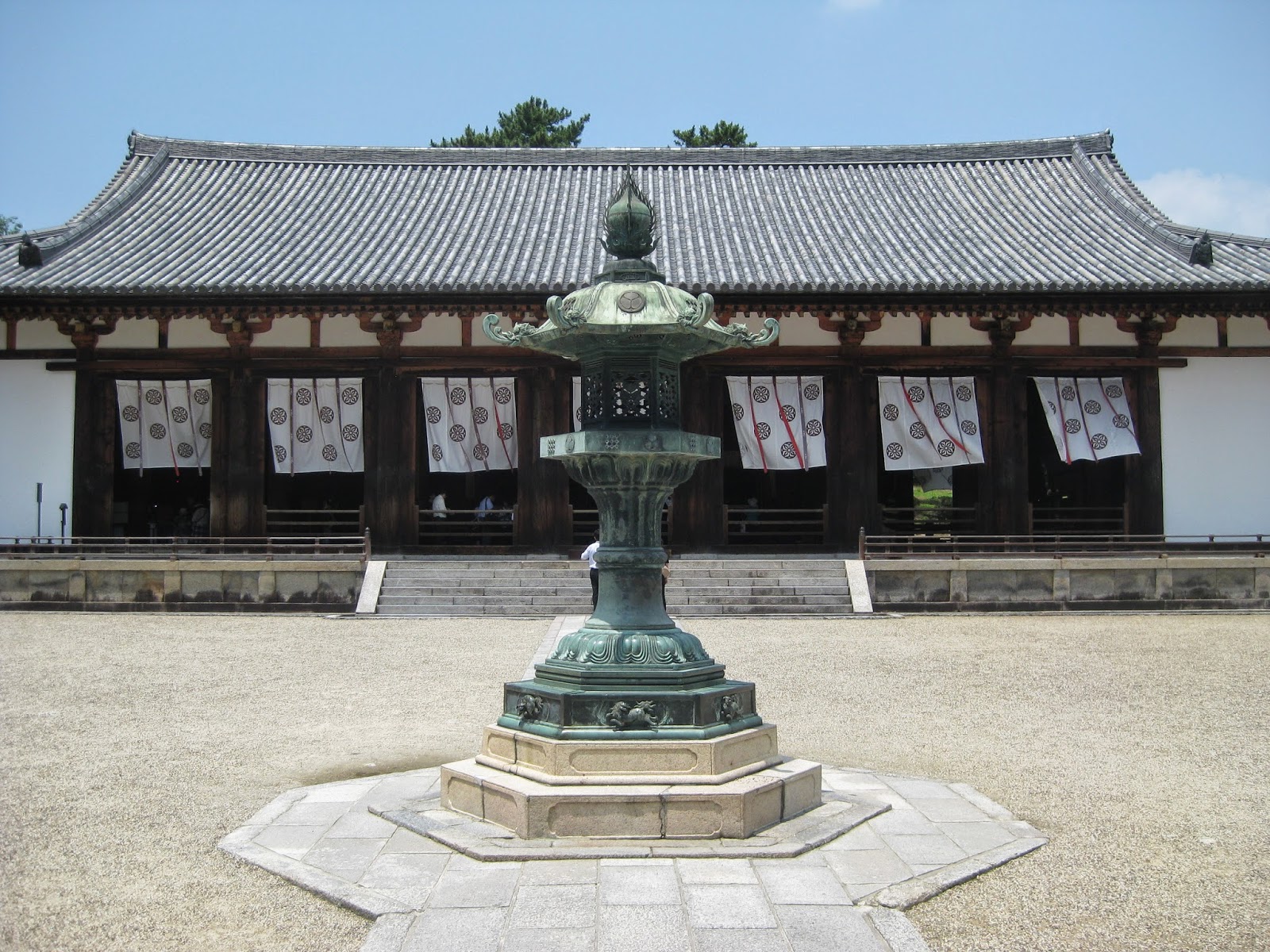Through
a grille in a thirteen hundred year old wooden pagoda I see them: tiny clay
figures of incredible age, their expressions concealed by the semi-darkness. Unlike
the handful of squinting Japanese around me, I was prepared for this. Feeling
like a minor criminal, I grab my flashlight and direct the weak beam at the
scrawny ascetics before me. They are ululating and pounding their chests in
lamentation, mourning the passing of the Buddha in their midst.
I
did not come to Horyu-ji to see these miniature statues, though. I was instead inspired
by a description I chanced upon in a musty biography of one of my favourite
writers: Nikos Kazantzakis. A student of Buddhism, he made a pilgrimage here in
1935, and raved about it in a letter to his wife in these terms: “Exquisite. Peaceful, pagodas,
springtime-sweet air, Buddhas smiling in the half-light, paintings on silk,
dancing girls and, above all, the goddess Kwannon, the goddess of mercy. This
is the most beautiful statue I’ve ever seen.’
On
this late June day, however, the air is not springtime-sweet. The sun is
bright, ferocious and dazzling. For once I look at the umbrella-wielding
Japanese women with something other than scorn. Nor is it especially peaceful. Smart
tour guides with blue flags and squeaky voices march hordes of bored-looking Japanese
junior high school children around the large grounds at military pace. Occasionally,
a shout of ‘atsu!’ (hot!) from one of
the boys rises above the general murmur.
There’s
a dearth of foreigners, or at least white people at Horyu-ji, underlining the
fact that it’s not that easy to get to. It took me two hours from Kyoto Station,
first on a slow-paced local train along a single-track railway to Nara, then
across a tableland of saturated rice fields and ugly houses to the dusty
town of Ikaruga. Green hills could be seen in the distance in all directions.
After a fifteen minute walk in unforgiving heat and humidity I reached a long
and narrow avenue of sloping pines. It seemed a fitting approach to one of
Japan’s oldest temples.
Indeed,
according to the tourist bumf, Horyu-ji is home to ‘the world’s oldest
surviving wooden structures’, among whose number is the aforementioned five-story
pagoda. Looking at this brown and white edifice with its deep eaves, I find the
claim hard to believe: rather disappointingly, it looks in great shape. I had
hoped for a sight redolent of antiquity that would send a thrill though my body.
Of more interest are the immense and discoloured clay guardians, with their rippling
muscles and fearsome expressions, that protect the central gate. Now they do
look old.
As
I leave the spacious western precinct, exiting through the long and shady cloister
gallery, I feel a thrill of excitement. Ahead in the gallery of treasures the statue
of the goddess Kannon waits, the one Kazantzakis called the most beautiful he’d
ever seen. It stands before a mandorla in a hall of its own, a remarkably tall
and slight wooden figure, with long arms and a water vase in its left hand. The
figure is feminine, but the face looks more like a man’s.
It’s
a mesmerising sight, well over a thousand years old, but is it the one
Kazantzakis spoke of? Later, back in Tokyo, I discover that Horyu-ji houses
another celebrated statue of Kannon, a so-called ‘secret Buddha’ that can only
be seen in the spring and fall. I guess I’ll never know.




